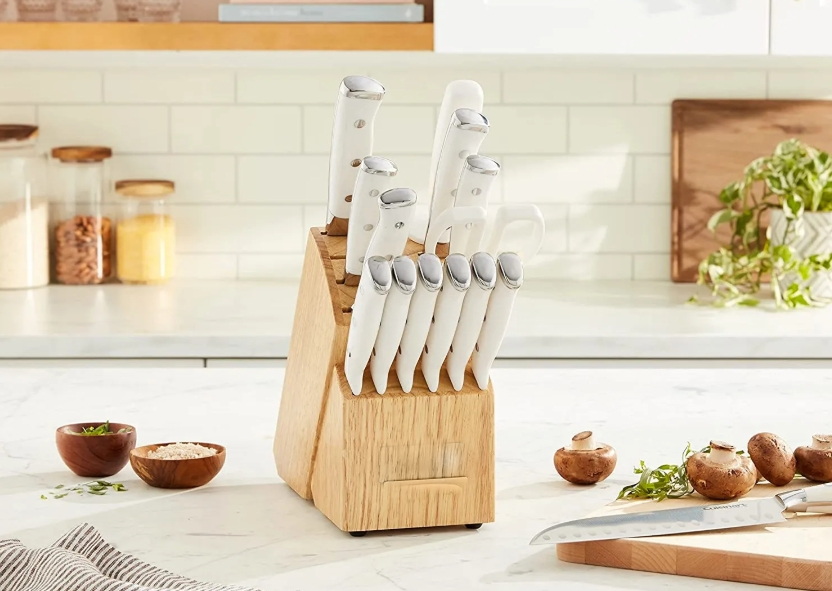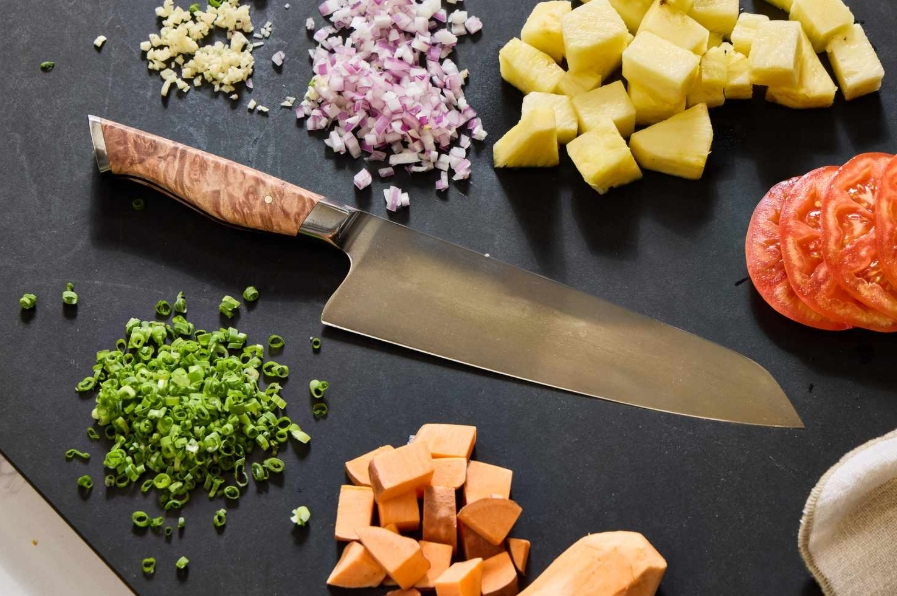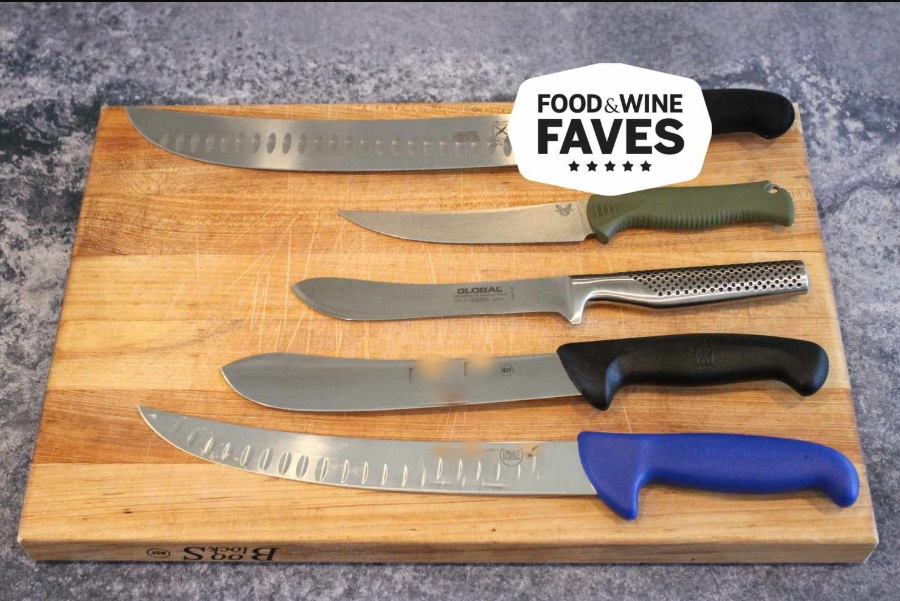

Views: 222 Author: Ella Publish Time: 2025-05-03 Origin: Site








Content Menu
● Essential Knives in a Good Knife Set
>> 5. Santoku Knife (Optional but Recommended)
● Additional Useful Tools in a Knife Set
● Features to Look for in a Good Knife Set
>> Blade Material and Sharpness
>> Knife Block or Storage Options
● How to Choose the Right Knife Set for You
>> Consider Your Cooking Style
● Knife Safety and Maintenance Tips
● FAQ: What Should Be Included in a Good Knife Set?
>> 1. What are the must-have knives in a basic knife set?
>> 2. Why is a chef's knife considered essential?
>> 3. What is the difference between a Santoku and a chef's knife?
>> 4. Should I buy a knife set with a knife block?
>> 5. How important is blade material in a knife set?
A good knife set is an essential foundation for any kitchen, whether you're a beginner home cook or a seasoned chef. The right set not only equips you with the tools to handle a wide range of culinary tasks but also enhances your cooking experience through comfort, precision, and durability. This comprehensive guide will explore what should be included in a good knife set, the features to look for, and how to choose the perfect set for your needs.

A well-rounded knife set includes knives designed for specific tasks, ensuring versatility and efficiency in the kitchen. At a minimum, a good knife set should contain the following:
The chef's knife is the backbone of any knife set. Typically around eight inches long, it is an all-purpose knife used for chopping, slicing, dicing, and mincing a variety of ingredients. Its versatility makes it indispensable for everyday meal preparation, suitable for both professional chefs and home cooks. The blade's curved edge allows for a rocking motion, which is ideal for finely chopping herbs or vegetables.
A small knife with a blade usually between three to four inches, the paring knife is perfect for precision tasks such as peeling fruits, trimming vegetables, and deveining shrimp. Its small size allows for better control and delicate cuts. This knife is essential for tasks that require accuracy and finesse, such as removing seeds or creating garnishes.
Characterized by its long serrated blade, the bread knife is designed to slice through crusty bread without crushing the soft interior. It is also useful for slicing other foods with tough exteriors and soft insides, like tomatoes or squash. The serrated edge grips the food's surface, allowing for clean cuts without excessive pressure.
A versatile knife that falls between the chef's and paring knives in size, usually four to seven inches long. The utility knife is great for cutting sandwiches, cheese, and medium-sized fruits and vegetables. It often features a serrated or straight edge, making it a handy tool for everyday kitchen tasks that are too large for a paring knife but too small for a chef's knife.
A Japanese-style knife, typically five to seven inches long, with a rounded tip and a slightly shorter blade than a chef's knife. It is excellent for slicing, dicing, and mincing, often considered safer and easier to use for some cooks due to its design. The Santoku's flat edge and granton (scalloped) blade help reduce food sticking, making it ideal for thin slicing.
Beyond the essential knives, some sets include extra tools that enhance your kitchen capabilities:
- Boning Knife: Thin and flexible, ideal for deboning meat and fish. Its narrow blade allows for precise cuts close to the bone without damaging the meat.
- Carving/Slicing Knife: Long and narrow, perfect for slicing cooked meats such as roasts or poultry into thin, even pieces.
- Kitchen Shears: Useful for cutting herbs, trimming meat, and opening packages. High-quality shears often come apart for easy cleaning.
- Honing Steel: Helps maintain the sharpness of your knives by realigning the blade edges. Regular honing prolongs the time between professional sharpenings.
- Knife Sharpener: Some sets include a manual or electric sharpener to restore the blade's edge when it becomes dull.
Including these additional tools can elevate your kitchen efficiency and make specialized tasks easier.

Choosing the right knife set involves considering several important features that affect performance, comfort, and longevity.
- Stainless Steel: Resistant to rust and corrosion, stainless steel blades are easy to maintain and retain sharpness well. They are suitable for most home cooks.
- High-Carbon Steel: Known for superior sharpness and edge retention, high-carbon steel blades require more care to prevent rust but offer excellent cutting performance.
- Damascus Steel: A layered steel known for its strength, sharpness, and beautiful patterns. These knives are often more expensive but prized for craftsmanship.
- Ceramic Blades: Extremely sharp and lightweight, ceramic knives hold their edge for a long time but are brittle and prone to chipping.
- Full Tang: The blade extends through the handle, providing better balance, strength, and durability. Full tang knives are generally higher quality.
- Partial Tang: The blade extends only partway into the handle. These knives are lighter but may be less durable.
- Ergonomics: Handles should fit comfortably in your hand and provide a secure grip to prevent slipping, especially when wet.
- Materials: Common handle materials include wood, plastic, resin, and composite. Wood handles offer a classic look but require more maintenance, while synthetic handles are durable and easy to clean.
- Bolster: The thick junction between blade and handle adds balance and protects fingers during use.
- Many knife sets come with a knife block or storage case, which helps organize knives safely and keeps them within easy reach.
- Some blocks have integrated sharpeners for convenience.
- Alternative storage options include magnetic strips or in-drawer organizers, which save counter space and protect blades.
If you cook a wide variety of dishes, a comprehensive set with multiple knives may be best. For example, if you prepare a lot of meat, a boning knife and carving knife will be valuable additions. If you mostly cook simple meals, a set with the essential knives (chef's, paring, bread) is sufficient.
Knife blocks take up counter space; consider drawer storage sets if space is limited. Budget also plays a critical role. While high-end knives offer superior performance and longevity, there are many affordable sets that provide excellent value for everyday use. Avoid extremely cheap sets that sacrifice quality and safety.
Avoid sets with many low-quality knives; prioritize sharpness, balance, and durability. It's better to have fewer high-quality knives than many mediocre ones. Investing in a reputable brand with good reviews often pays off in the long run.
Consider how much time you are willing to spend maintaining your knives. High-carbon steel knives require more care to prevent rust, while stainless steel is more forgiving. Also, check if the knives are dishwasher safe (generally not recommended) or require hand washing.
Owning a good knife set also means knowing how to care for and use your knives safely.
- Proper Cutting Techniques: Always cut away from your body and use a stable cutting board. Keep fingers tucked under the hand holding the food to avoid accidental cuts.
- Regular Honing: Use a honing steel regularly to keep the blade edge aligned and sharp.
- Sharpening: When honing is no longer effective, sharpen your knives using a whetstone, professional service, or a quality sharpener.
- Hand Washing: Wash knives by hand immediately after use and dry thoroughly to prevent corrosion.
- Safe Storage: Store knives in a block, sheath, or on a magnetic strip to protect the blades and prevent accidents.
A good knife set is a blend of essential knives, quality materials, ergonomic design, and practical storage solutions. At minimum, it should include a chef's knife, paring knife, bread knife, utility knife, and optionally a Santoku or boning knife. Additional tools like kitchen shears and honing steels add value. Selecting the right set depends on your cooking habits, kitchen space, and budget, but investing in quality knives will always enhance your culinary experience. Remember, the best knife set is one that fits your personal needs, feels comfortable in your hand, and inspires you to cook with confidence and joy.

A basic knife set should include a chef's knife, paring knife, bread knife, and a utility knife to cover most kitchen tasks.
Because it is versatile and can handle a wide range of cutting tasks, making it the primary knife for meal preparation.
A Santoku knife is typically shorter with a rounded tip and is designed for slicing, dicing, and mincing, often considered safer and easier to handle than a traditional chef's knife.
Knife blocks help organize and protect your knives, but they take up counter space. Consider your kitchen layout before choosing.
Blade material affects sharpness, durability, and maintenance. High-carbon steel offers better edge retention but requires more care, while stainless steel is easier to maintain and rust-resistant.